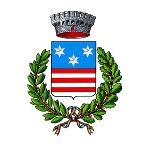Monastero di Santa Caterina
Ultimo aggiornamento: 15 ottobre 2024, 16:20
Benedettine cassinesi. Le origini di questo Monastero sono collegate a una Congregazione di “Donne ritirate” che avevano la loro abitazione presso la prima chiesa madre del Paese dedicata a San Giuliano. Ciò è attestato da una richiesta alla Curia Arcivescovile di Messina per l’erezione di un altare in onore di San Lorenzo martire in data 21 aprile 1492, mentre nel 1495 ci fu un’altra richiesta per la costruzione della “ Pinnata di San Pancrazio”. Il 26 ottobre 1498 Antonio Mortellens vicario generale dell’Arcidiocesi di Messina emana la “bolla” di fondazione. Il 25 maggio 1533 l’Arciprete della nuova chiesa madre G. Lombino cede alle suore la chiesa con i benefici annessi, e si impegna alla continua assistenza spirituale delle suore, nonchè alla partecipazione di tutto il clero e il popolo per la solennità del titolare della chiesa, per i riti del “Giovedi” Venerdi, Sabato santo e il Corpus Domini”. Molti paramenti ricamati in oro e argento portano la data del 1751. E’ di questo periodo la donazione in perpetuo di acqua corrente per il giardino fatta dal Marchese di Geraci. Nel 1818 le suore si rifugiarono in campagna a causa del terremoto che danneggiò il monastero. Nel 1866 il monastero in seguito alla soppressione degli ordini religiosi perse tutti i beni immobili, che nel 1909 furono ricomprati dal Vescovo di Cefalù e riconsegnati alle suore. Nel 1959 ottenne il riconoscimento di Ente Morale. Al suo interno sono conservati atti e documenti interessanti, così come opere d’arte di notevole valore.
Opere
Reliquiario di San Giuliano: Con alla base sculture di santa Caterina e della Vergine ; in alto il Cristo Risorto. Il tutto realizzato con l’argento del monastero.
Statua: In marmo. Raffigura Santa Caterina con, nel piedistallo, sculture in marmo della flagellazione di Gesù, di San Benedetto, di Santa Scolastica, San Giuliano e Santa Lucia, opera di Giuliano Di Marino da Palermo.
Organo: opera di Giacomo Andronico da Palermo. 1765. Ristrutturato recentemente.
Quadro di San Giuliano e San Placido : 1654.
************************
Monastery Santa Caterina
Cassinese Benedictines. The origins of this Monastery are related to a Congregation of "Retired Women" who had their residence at the first mother church of the country dedicated to St. Julian. This is attested by a request to the Archiepiscopal Curia of Messina for the erection of an altar in honor of St. Lawrence the Martyr dated April 21, 1492, while in 1495 there was another request for the construction of the " Pinnata di San Pancrazio." On October 26, 1498 Antonio Mortellens vicar general of the Archdiocese of Messina issued the "bull" of foundation. On May 25, 1533, the Archpriest of the new mother church G. Lombino cedes the church with the attached benefices to the sisters, and pledges the sisters' continued spiritual assistance, as well as the participation of all the clergy and people for the solemnity of the titular of the church, for the rites of "Thursday" Friday, Holy Saturday and Corpus Christi." Many gold and silver embroidered vestments bear the date 1751. A donation in perpetuity of running water for the garden made by the Marquis of Geraci dates from this period. In 1818 the nuns took refuge in the countryside because of the earthquake that damaged the monastery. In 1866 the monastery following the suppression of religious orders lost all its real estate, which in 1909 was bought back by the Bishop of Cefalù and returned to the nuns. In 1959 it obtained recognition as a Moral Body. Inside are preserved interesting deeds and documents, as well as works of art of considerable value.
Works
Reliquary of San Giuliano: With at the base sculptures of St. Catherine and the Virgin ; at the top the Risen Christ. All made of silver from the monastery.
Statue: In marble. Depicts St. Catherine with, in the pedestal, marble sculptures of the scourging of Jesus, St. Benedict, St. Scholastica, St. Julian and St. Lucy, by Giuliano Di Marino of Palermo.
Organ: the work of Giacomo Andronico from Palermo. 1765. Recently restored.
Paiting of Saint Julian and Saint Placid : 1654.

